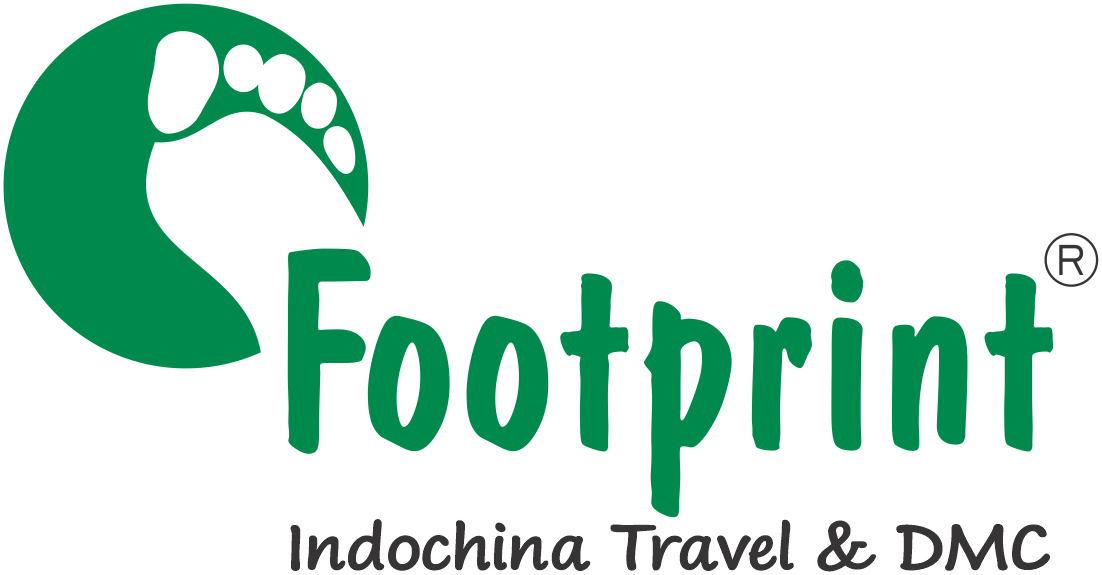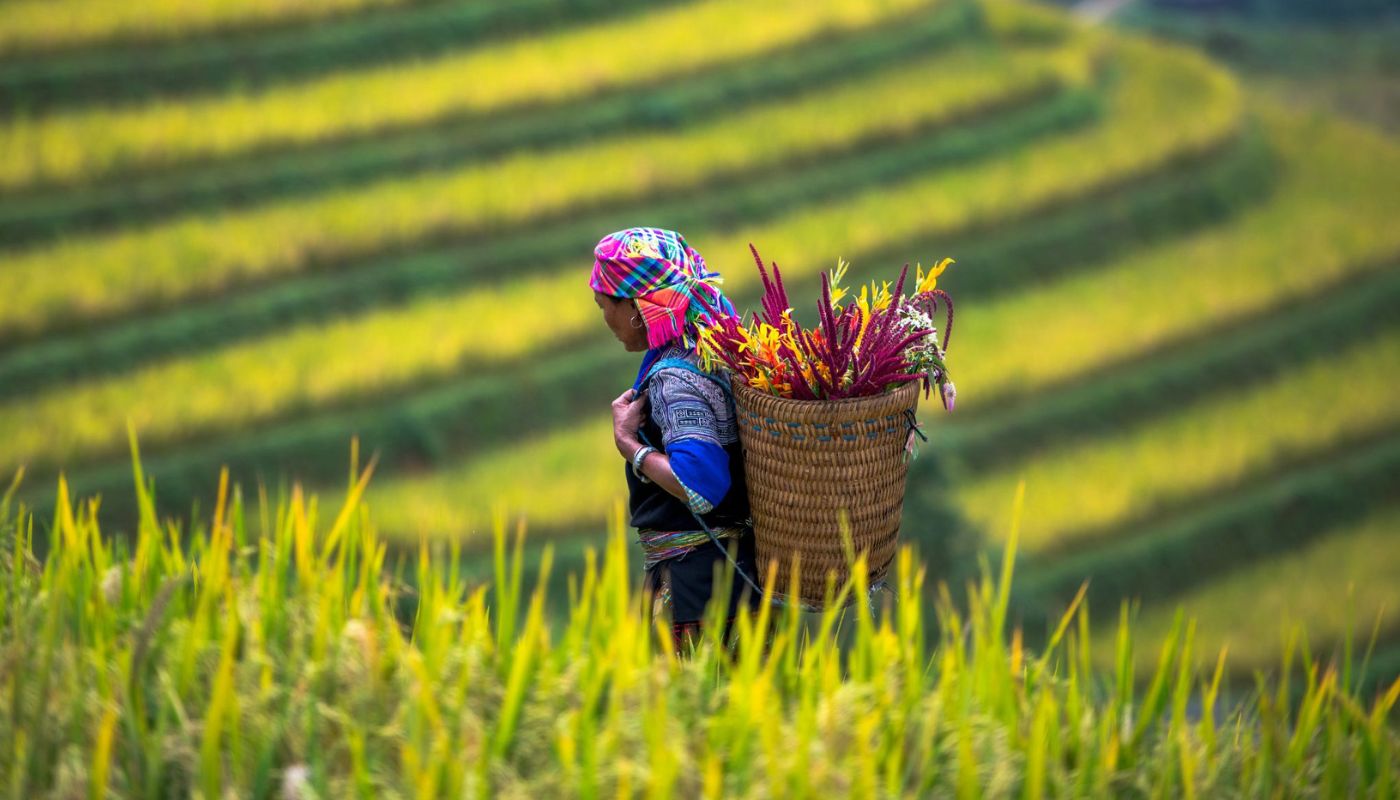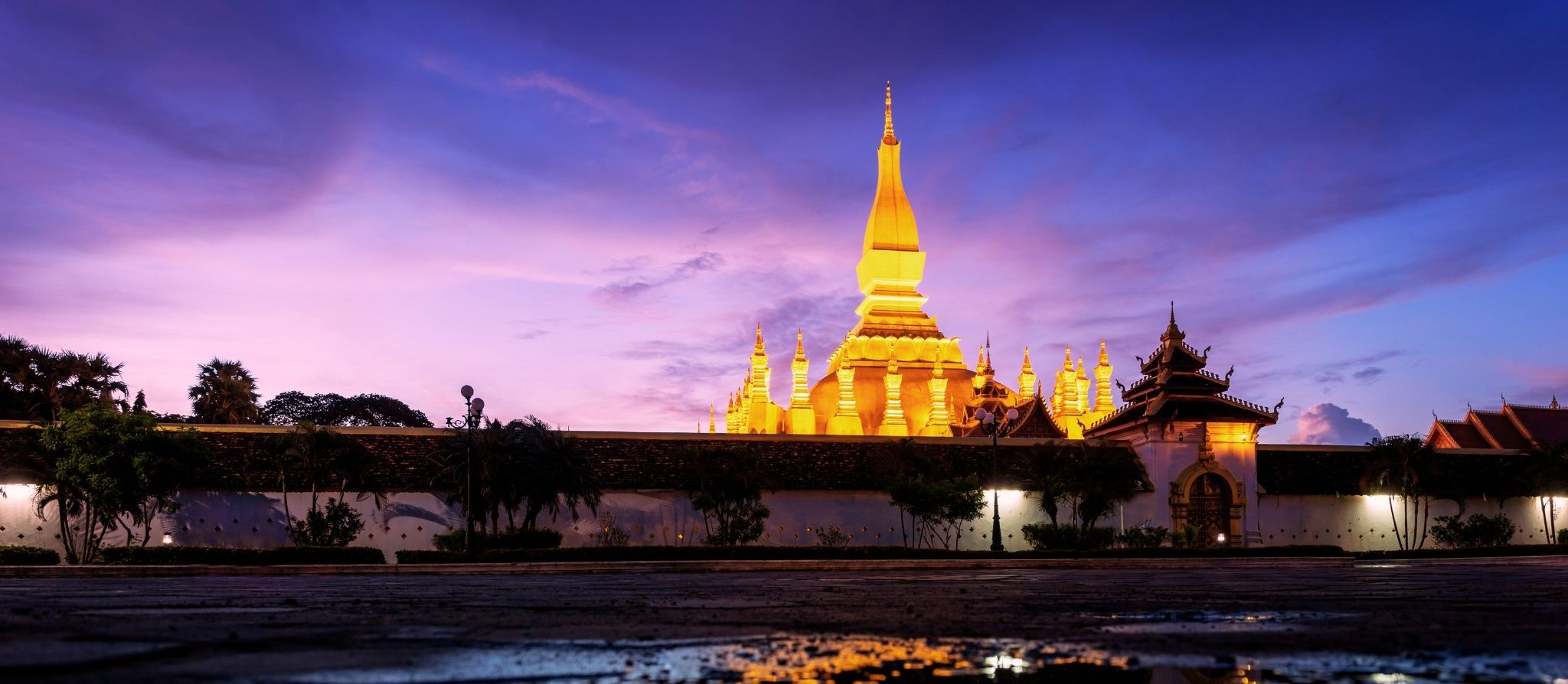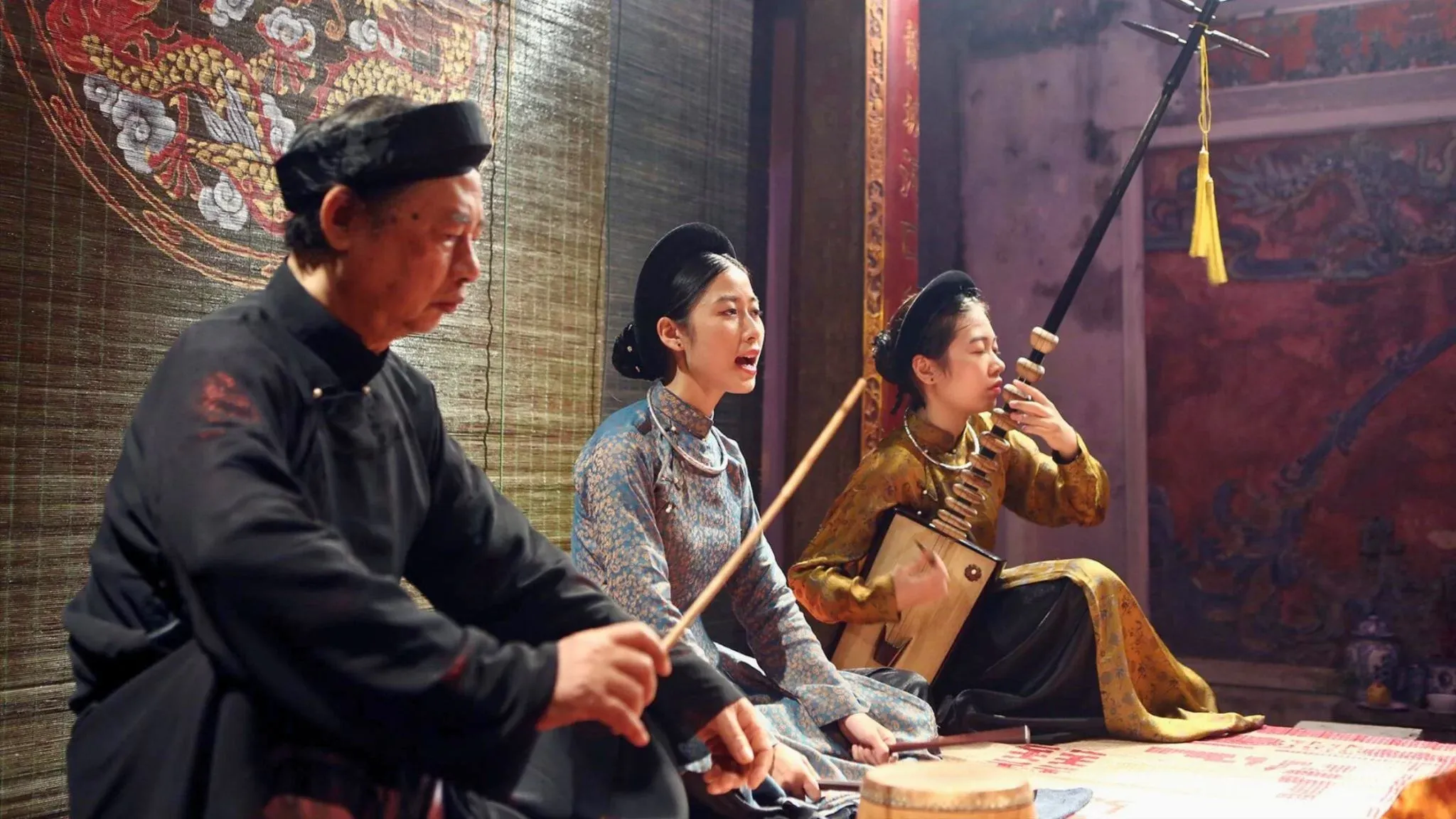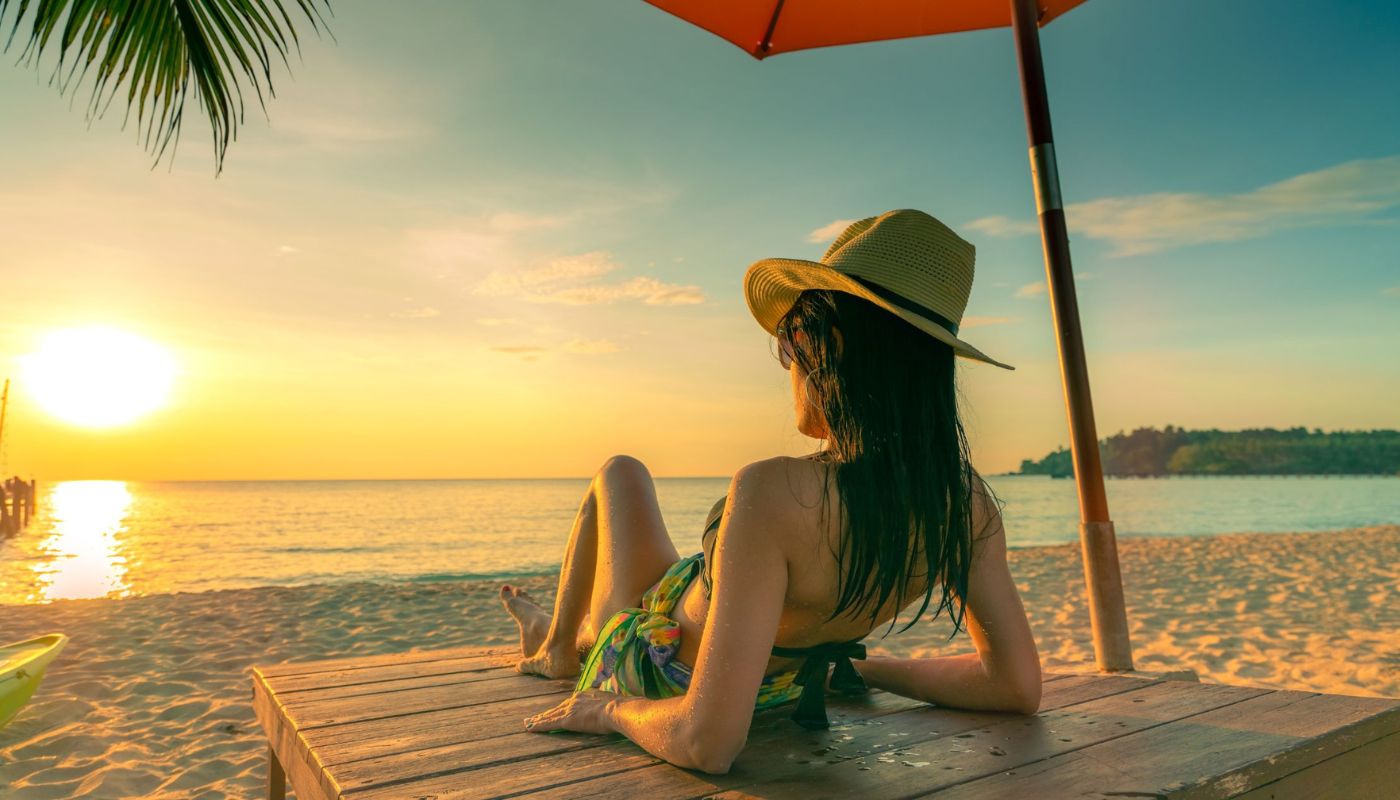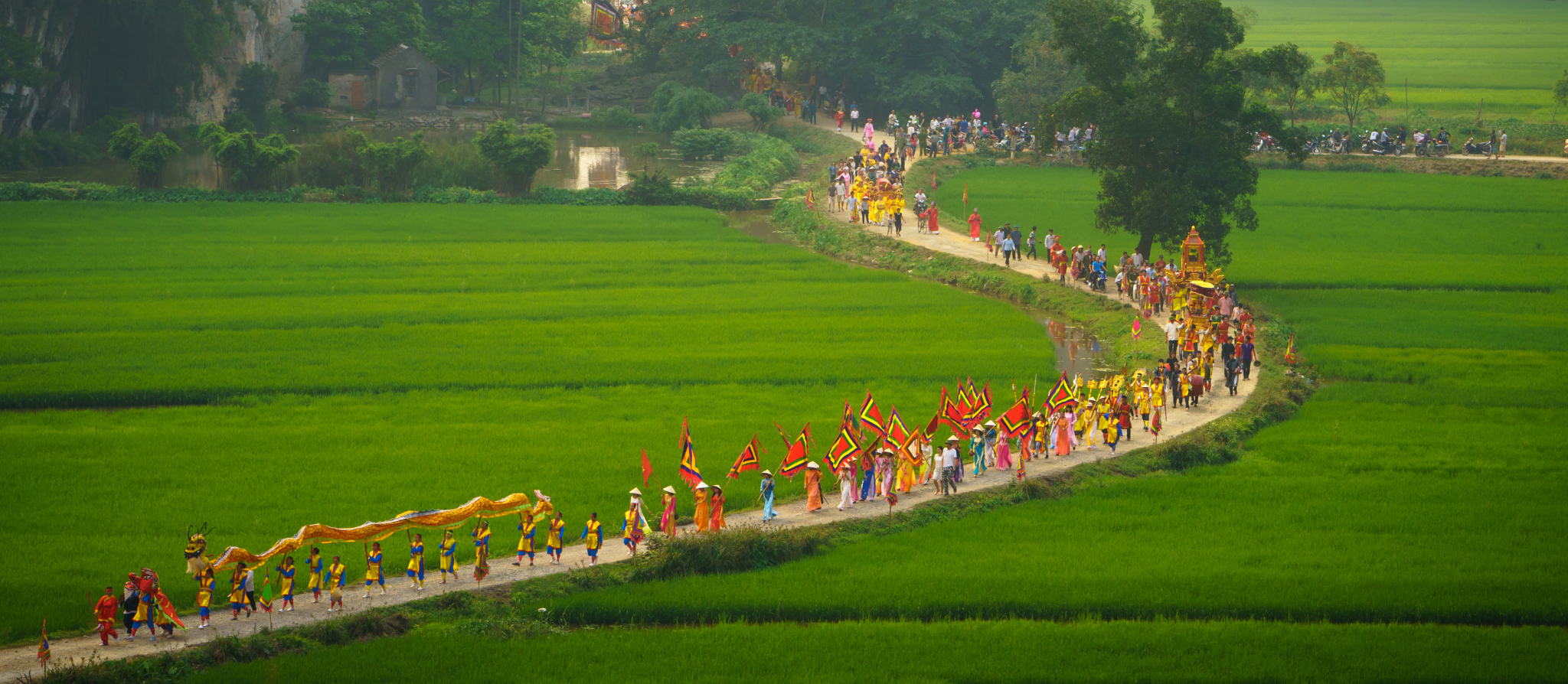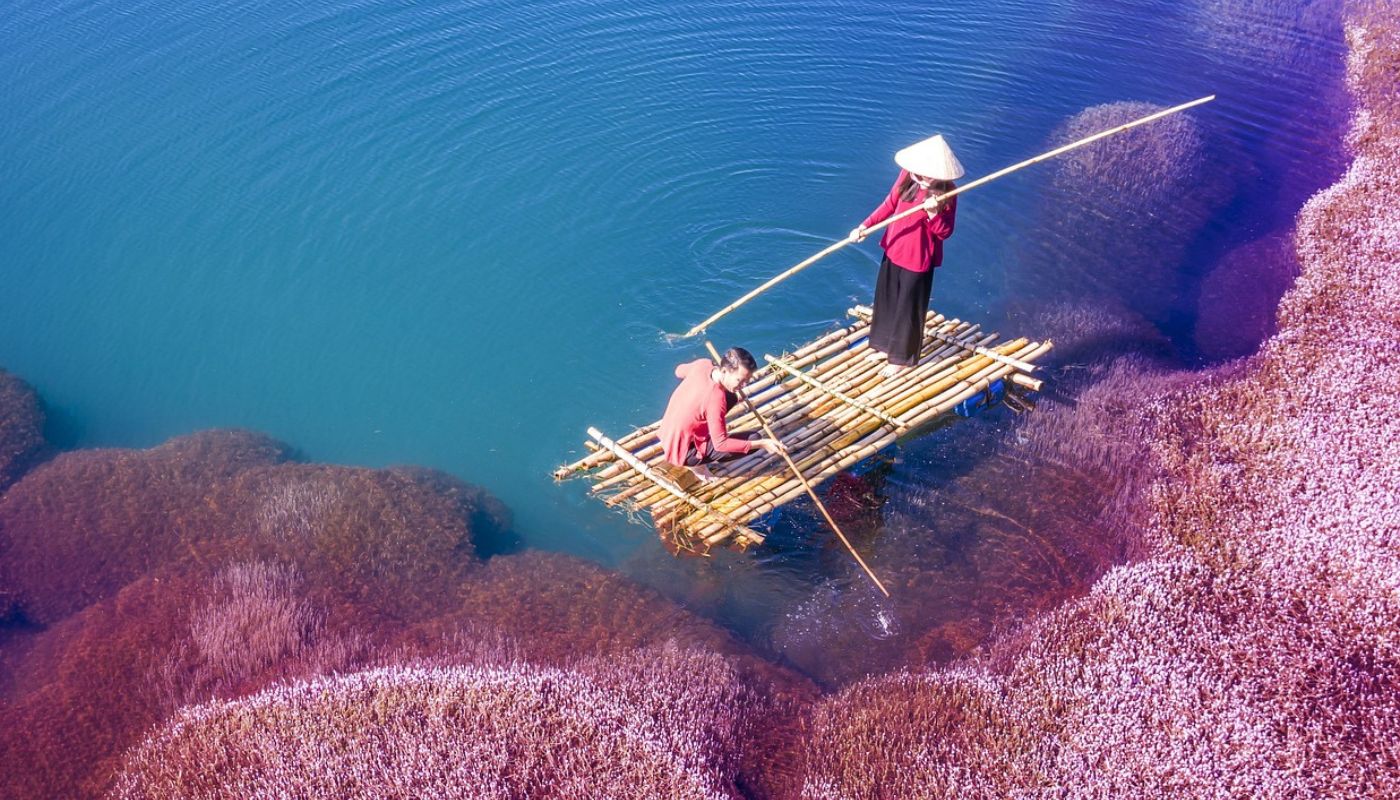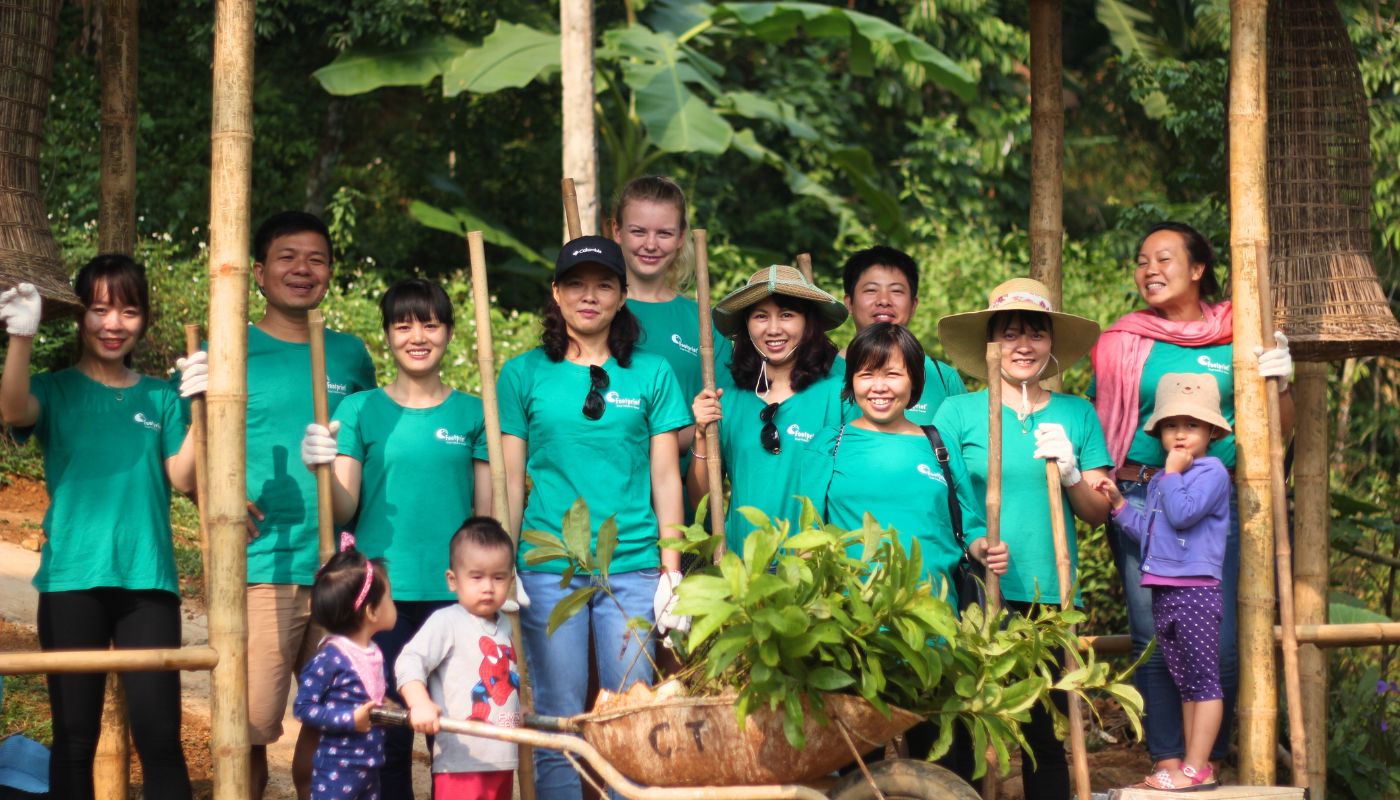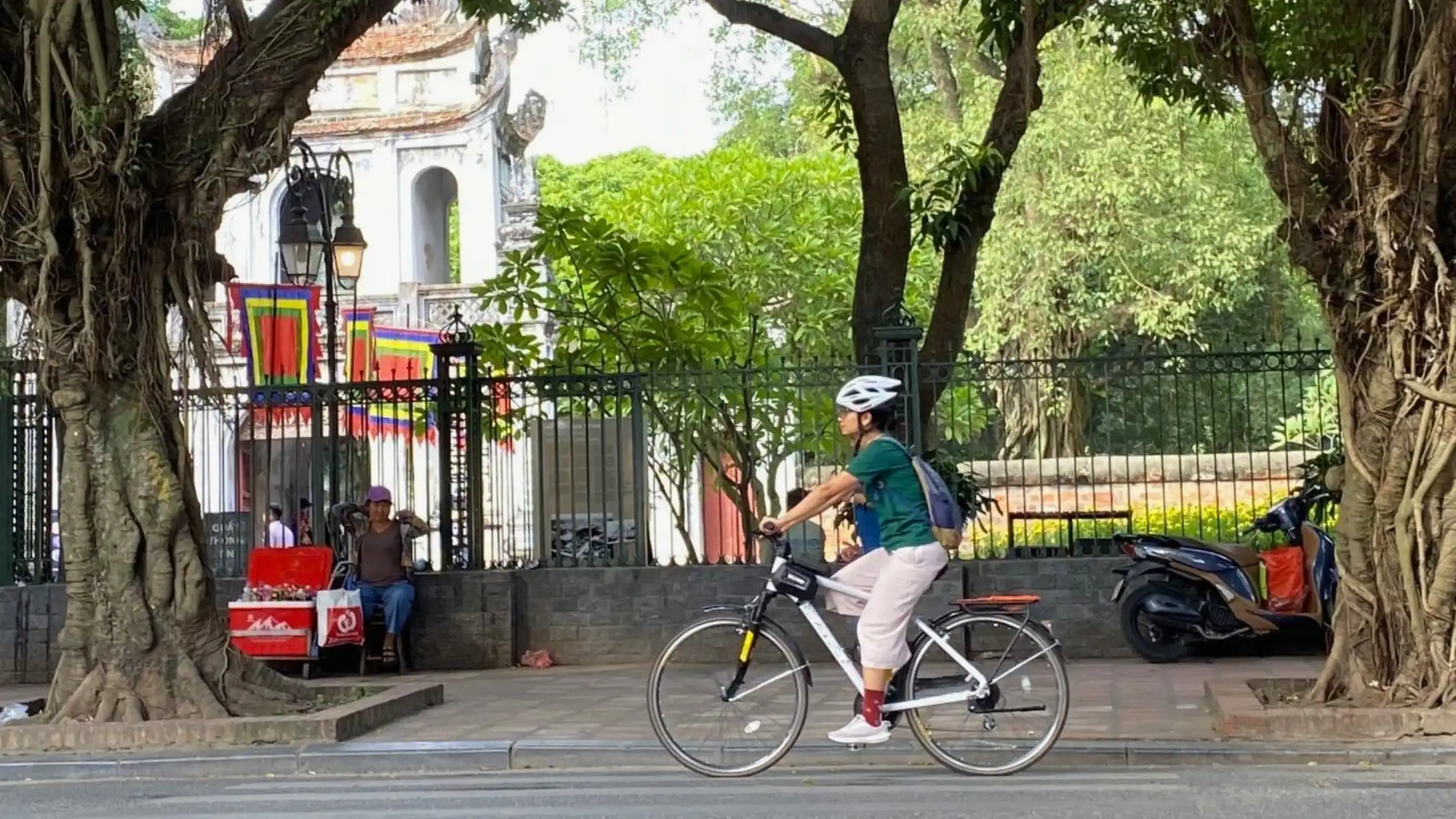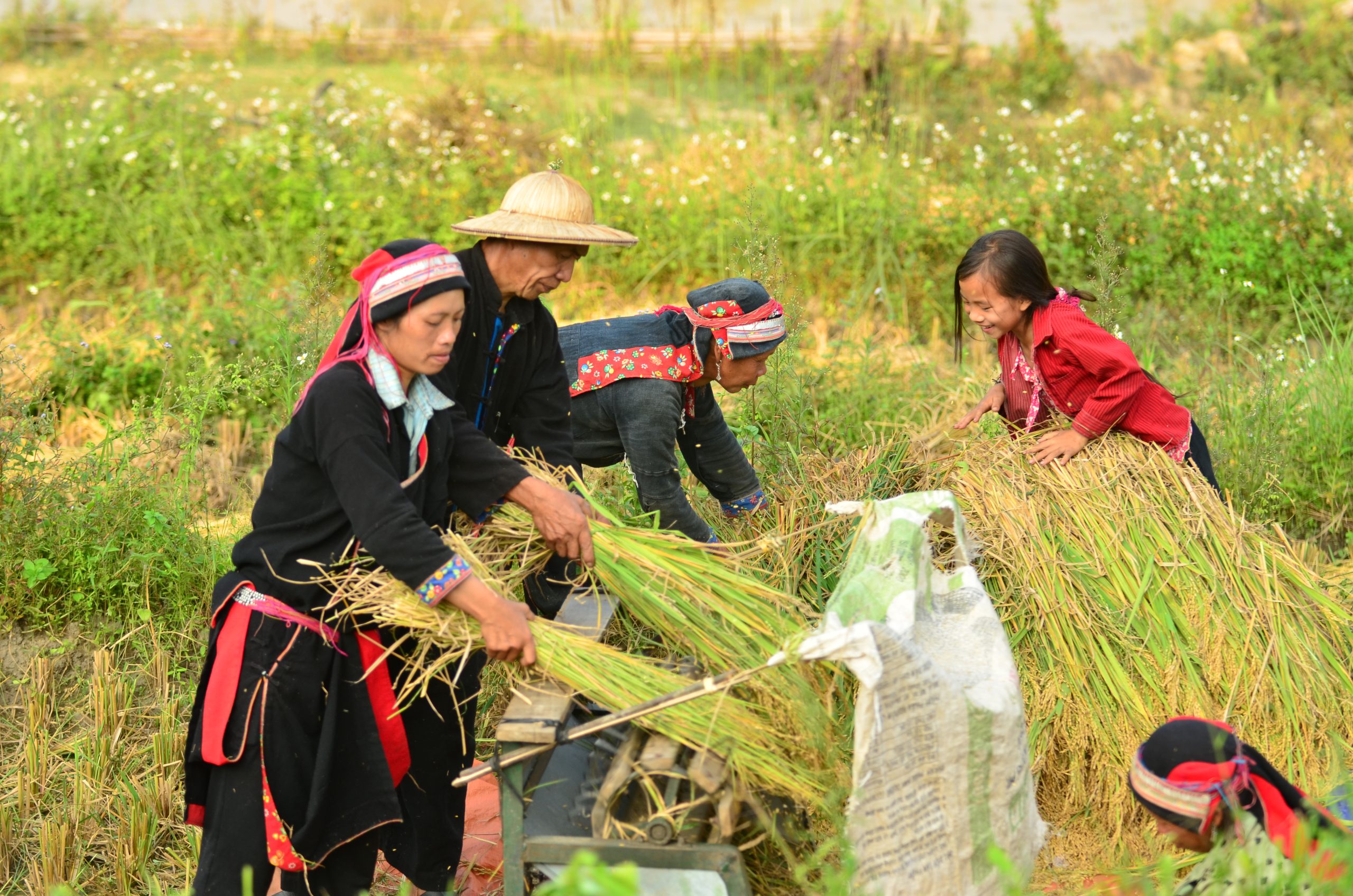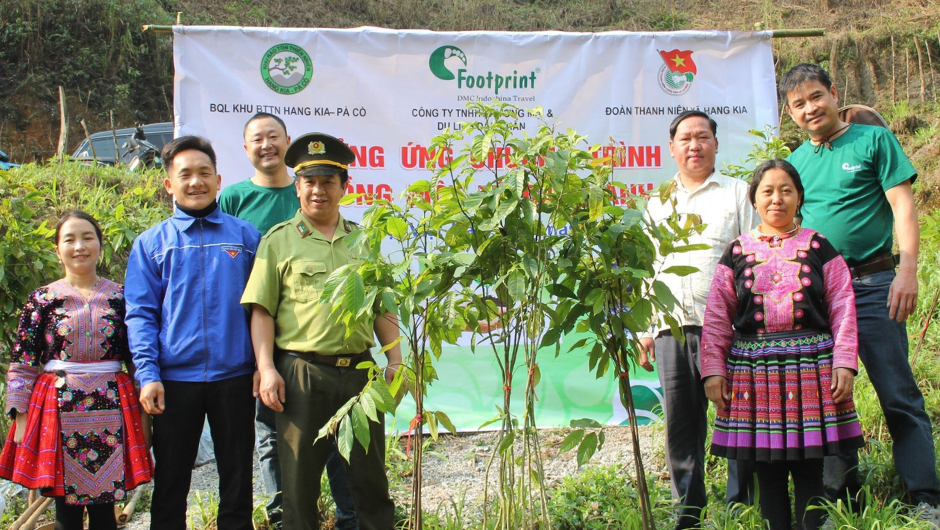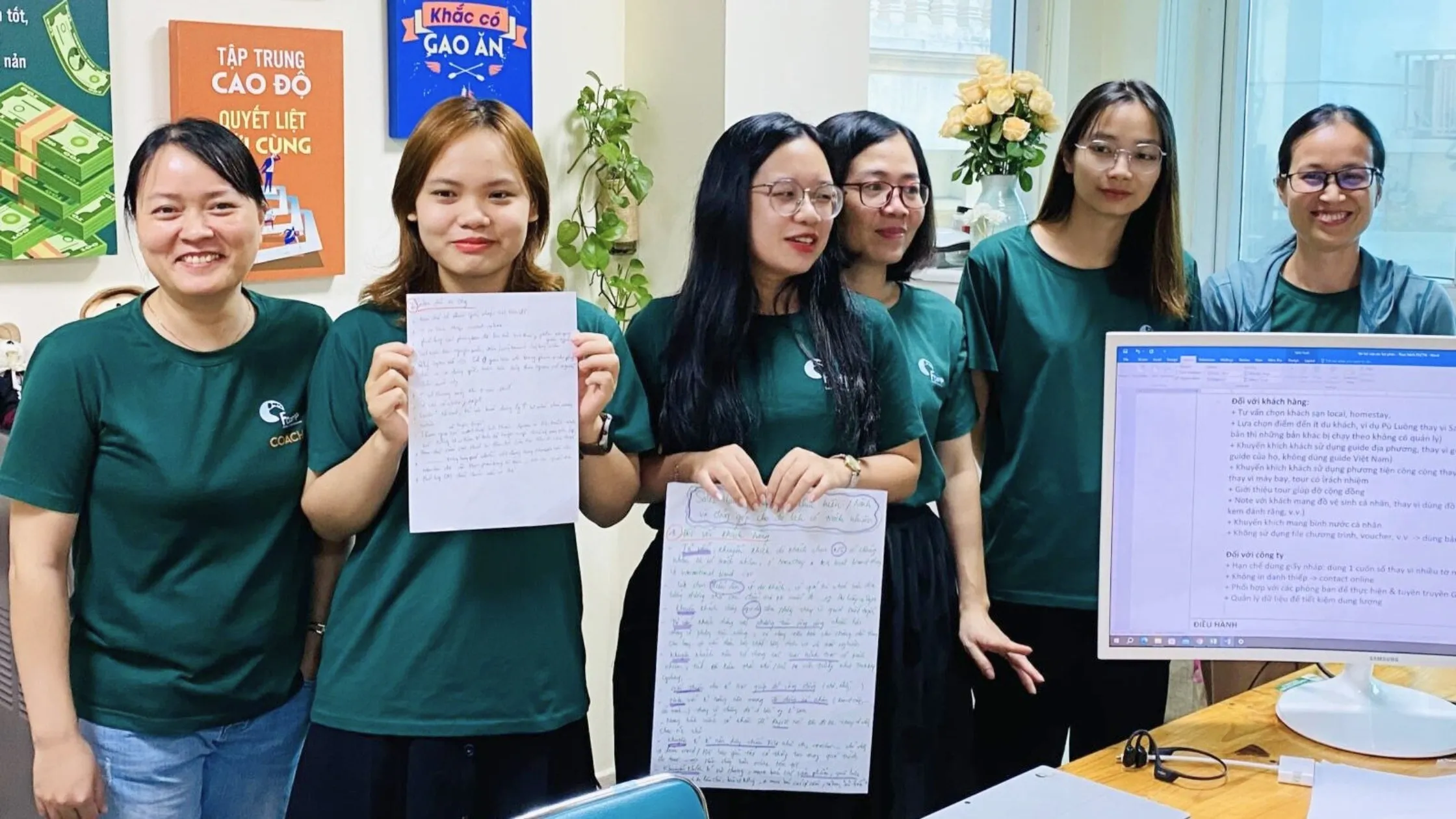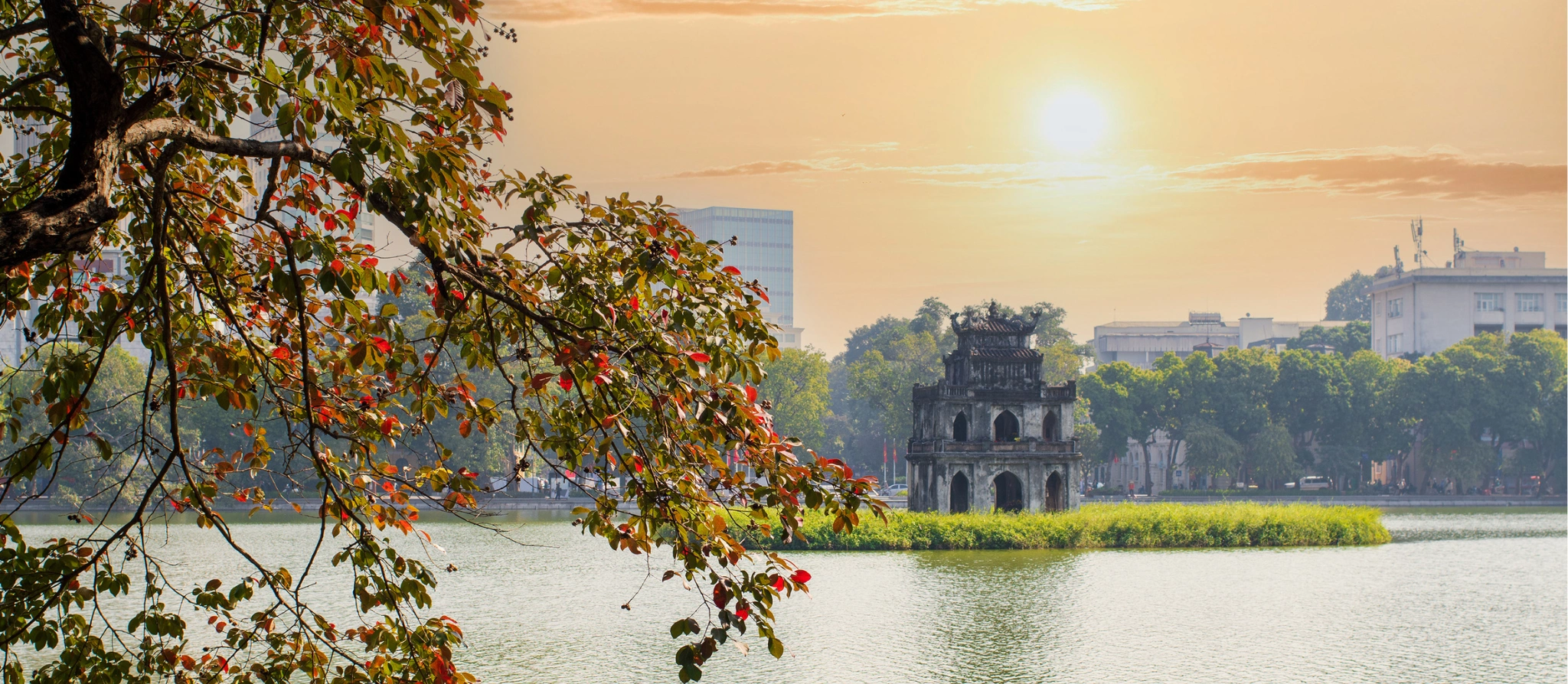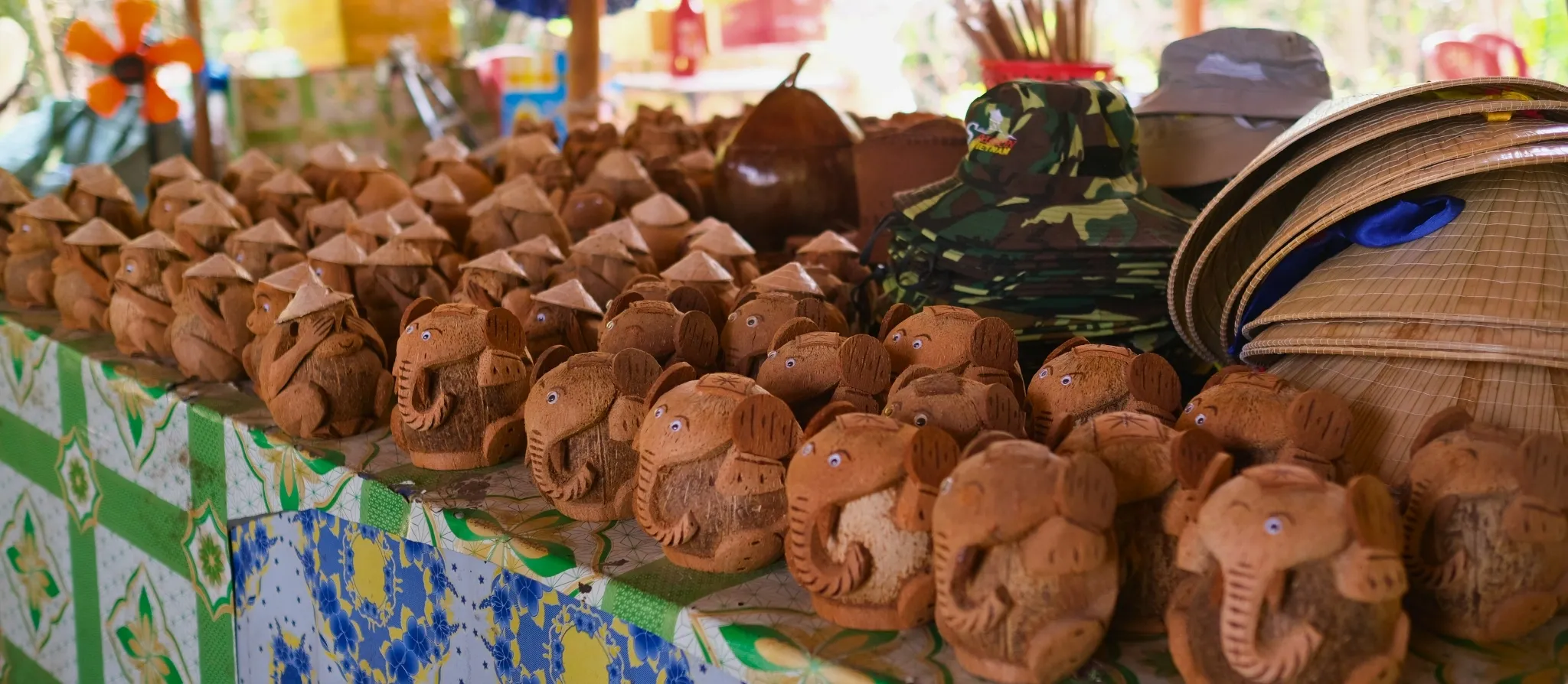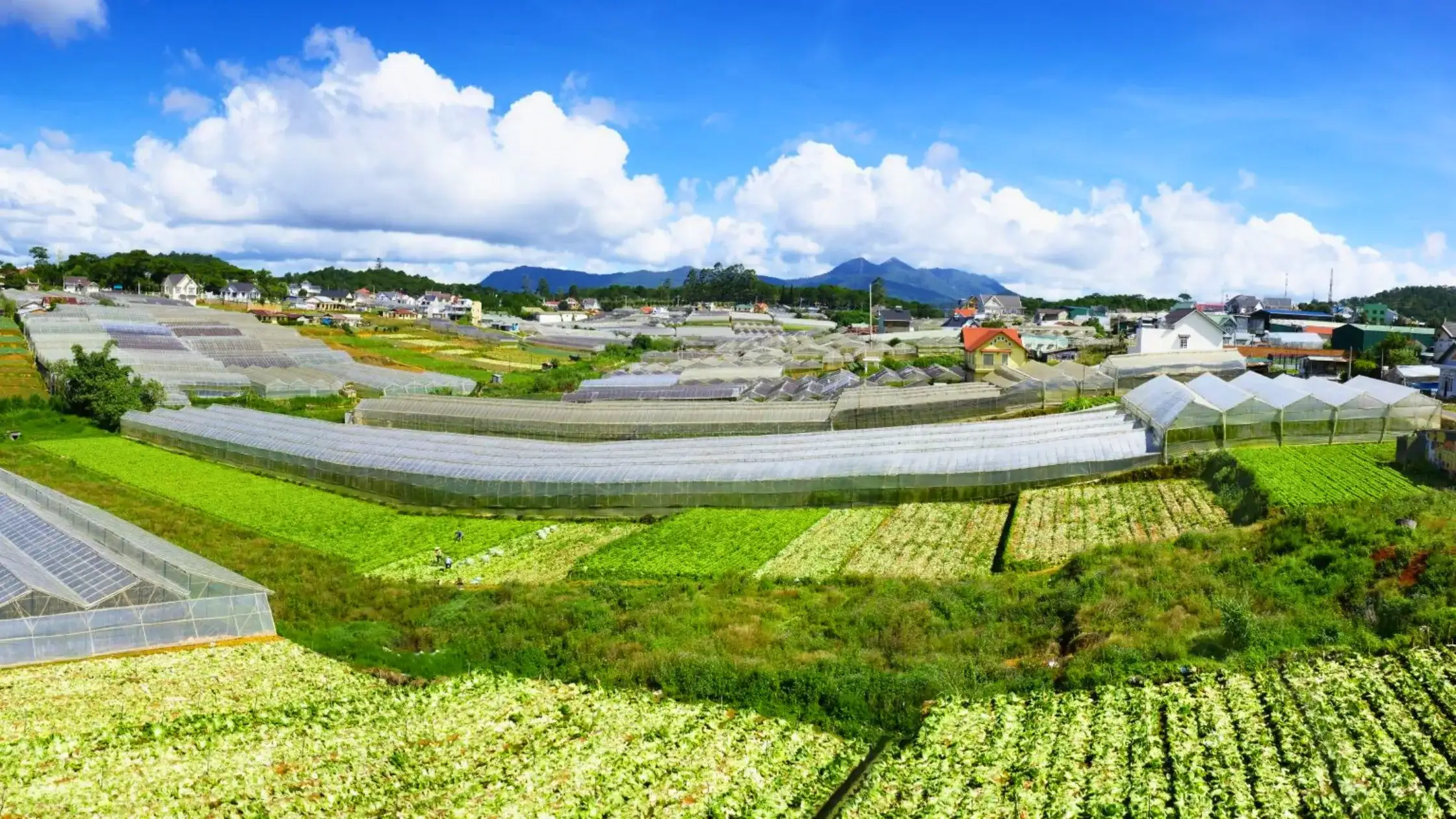General Advice
Vietnam is generally an easy country to travel. Here are some general tips and advice on topics like: weather, what to bring, tipping, what to wear, currency, etc. If neesed, we have event more advive in our FAQ pages. Ff you still have questions please feel free to ask us via email, facebook or twitter. We’d very glad to help! Happy travel-planning!
Weather:
Hanoi and northern Vietnam have a distinct winter and summer season. A dryer winter lasts from November to April with average temperatures of 18 – 20ºC. Summer lasts from May to October and is hot and humid with temperatures around 30 – 35ºC. In areas like Sapa, prepare accordingly for the winter months as it has been known to snow on occasion.
Hue and Danang, in the center of the country, have very hot, dry weather from February to August with temperatures reaching over 35ºC. The region can experience quite heavy rainfall between September and January.
Ho Chi Minh City and the south have a hot, dry season from December till April with average temperatures around 28ºC. The rainy season lasts from May through till November. It rarely rains for long periods, even in the rainy season, with most rain coming in short, heavy bursts.
Vietnam Visa Requirements
Planning your trip to Vietnam just got easier with the country’s updated visa policy, effective from 15 August 2023. These changes make visiting Vietnam more accessible for travelers worldwide.
Visa Exemption Policy
Travelers from certain countries can enter Vietnam without applying for a visa. Most notably, citizens from 13 countries now enjoy a longer stay — extended from 15 days to 45 days regardless of passport type or travel purpose. These include Germany, France, Italy, Spain, the UK, Russia, Japan, South Korea, Denmark, Sweden, Norway, Finland, and Belarus.
In total, 25 countries below benefit from Vietnam’s visa exemption policy, including neighboring ASEAN nations. Here is the full list of countries that are exempted from visa requirement:
Brunei, Myanmar, Belarus, Denmark, Finland, France, Germany, Italy, Japan, Norway, Russia, South Korea, Spain, Sweden, The UK, The Philippines, Cambodia, Indonesia, Kyrgyzstan, Laos, Malaysia, Singapore, Thailand, Chile, Panama.
UPDATED:
Vietnam has been progressively easing its entry policies to make travel more convenient for international visitors. Under the Government’s Resolution 229/NQ-CP (dated August 8, 2025), citizens of Belgium, Bulgaria, Croatia, the Czech Republic, Hungary, Luxembourg, the Netherlands, Poland, Romania, Slovakia, Slovenia, and Switzerland are granted visa-free entry for up to 45 days for tourism purposes, regardless of passport type. This policy is valid from 15 August 2025 to 14 August 2028 as part of Vietnam’s tourism promotion and development program.
How do I apply for a visa to Vietnam?
There are 3 ways to get your Vietnam visa:
1. Get your visa in the country where you are living by contacting the visa department at the Vietnam Embassy or Consulate there.
Documents needed: the passport needs to be valid for 6 months at the departure date; visa application forms; and probably some others required by the embassy or consulate. Visa forms are available directly from the Vietnamese embassy or consulate in your country.
Fees: vary from embassy to embassy.
Processing time: It will take between 4 to 10 days depending on your country of origin.
2. Get your visa upon arrival in Vietnam with pre-approved entry visa letter.
Relax and we will handle everything from here for you. Footprint Vietnam Travel, as your sponsor, will email you the Visa Approval Letter issued by the Vietnam Immigration Office here. When you enter Vietnam by air* you will bring one copy of the whole visa letter per passenger, fill out a short form, and give the border officials 2 passport photos and a fee (depending on visa type). Additionally, visa fee needs to be paid in USD or VND (the bills needs to be neat). He/she will give you the all important visa and stamp on your passport.
Documents needed: A complete copy of your passport via email including your full name as it appears on your passport, date of birth, gender, nationality, passport numbers, passport expiry date, and your arrival date to Vietnam or flight information.
Fees: This depends on the type of visa you require (Tourist or Business, 1 or 3 months, Single or Multiple Entry). Please get this information from our Footprint travel consultant.
Processing time: Normally it takes 2-3 days to complete from when we receive all your information.
Attention please:
(*) We can only obtain the visa for you once you have decided to book a tour with us. This is set by the Vietnam Immigration Department.
(**) Visa upon arrival can only be arranged when you enter Vietnam by air at Vietnam’s international airports (Hanoi, Danang, HCM City).
3. Vietnam E-Visa (Electronic Visa)
For those not covered by the exemption, Vietnam offers an e-visa option that has become much more flexible. Citizens of all countries and territories can now apply online for a 90-day e-visa that allows multiple entries. This is an ideal option for longer trips or travelers planning to visit Vietnam more than once during their stay in Asia.
Applying is straightforward: complete the online form, pay the processing fee, and receive your visa code by email. You can then print your e-visa or download it directly from the official Vietnam Immigration Department website.
Shopping experience:
Shopping culture is huge in Vietnam, and visiting the many local markets, shopping districts, and shopping centres is a great experience. Bargaining is the norm at many of these places. Vietnam offers some excellent products at great value, so be sure to schedule some shopping time while in Vietnam.
Tips for Shopping and Bargaining in Vietnam
• If the item does not have a price tag, the price is nearly always negotiable. When negotiating a price, knock at least three-quarters off the top.
• If negotiations are getting you nowhere, start to walk away—you’ll be amazed by how many sellers will agree to your price as you leave.
• Vietnam has recently switched from paper to polymer (plastic) banknotes, and some of the notes look very similar because of their color and all the zeroes. For example, the 20,000 Dong note looks very similar to the 200,000 Dong note, and the same goes for the 50,000 and 500,000 Dong notes.
• When entering a negotiation, decide on a price you feel good about and aim for it.
• Always remain positive and smile throughout the process.
Wandering around and shopping in Hanoi is endless. Look for great bargains and interesting products at these recommended spots:
Dong Xuan Market – Although it is mainly set up for Vietnam wholesalers selling to the numerous Hanoi shops, it is still a great place to see Vietnam in action and maybe even get a good deal.
Dong Xuan Night Market – Held on Friday, Saturday, and Sunday evenings, Hang Dao and Hang Duong streets become pedestrian-only and light up for Hanoi’s largest night market.
Offers a range of cheap products, including clothes, cell phone cases, and sunglasses.
Enjoy the local energy and street food along the side streets.
Warning: The night market has become notorious for pick-pocketers and bag slashers. Please leave all valuables at your hotel, do not take your passport, do not take a bag or purse, and only take as much money as you will need for the evening. If you do this you will not have any problems at all, and soon those pesky theives will have nothing better to do but go home.
Hanoi’s Old Quarter – The Old Quarter’s shopping possibilities are endless! You can walk around and around for days shopping and bargaining, and filling up your luggage with souvenirs and gifts. Most of the streets are organized to sell a certain product. Look for shoe street, silver street, and kitchen supply street to start off. Hang Bong is well known for its numerous multi-floored art galleries.
Luxury Shopping and Brand Names – Near the Opera House and Metropole Hotel, you’ll find stores like Louis Vuitton, Gucci, and others.
Ho Chi Minh City perhaps some of the best shopping areas in the country. Here are some recommended markets in Ho Chi Minh city:
Ben Thanh Market – Number one on any trip to Saigon should be the historic Ben Thanh Market, located in District One. The variety of items for sale here is quite staggering with the sale of everything from clothing, fabrics, cosmetics, fake Rolexes and coffee, to fruit, vegetables and live animals. As mentioned Dong Khoi Street in District One is the place to go for top quality brand labels, and is well worth a visit. Dong Khoi’s trendy neighbourhood also host some quality Vietnamese art and craft shops, cafés, and nightclubs.
Diamond Plaza – The most popular shopping mall is Diamond Plaza, which has a good rang of quality designer clothing, fragrances and electronics, with a cinema and bowling alley on the upper floors.
Saigon Tax Trade Center – Sitting on the corner of Nguyen Hue and Le Loi Street is the Saigon Tax trade center. The ground floor mostly specializes in locally made gold and silver jewelry. Throughout the store there is great quality local and imported clothing, shoes, cosmetics and tourist souvenirs. Of special note is the 3rd floor where you will find a seller of pirated DVDs along with a reasonable sized supermarket selling a great selection of local and imported foods from around the world.
Parkson Department Store – Parkson Department Store, which opened its doors in 2005, is different from the two mentioned above, as the entire store is owned operated entirely by Parkson, and they sell more of the big ticket items such as plasma TVs and electronics, along with the usual clothing and cosmetics. Great for a quick look if you have the time.
An Dong Wholesale Market (Near China Town) – Shoppers are presented with an overwhelming choice of clothes fabrics, jewelry and food, but with an emphasis on clothing and fabrics. Even though this is a wholesale market store holders are happy to sell to the public and international travelers. Fewer tourists frequent An Dong because it’s a little further away and not as well known as Ben Thanh, however it’s a great opportunity to see a local Vietnamese market in action. The ground level of An Dong specializes in mainly gold jewelry and food, with the upper levels of the market selling clothing and home items.
Binh Tay in Cho Lon (China Town) – Nearly every major city in the world has a China Town and Saigon is no different. Cho Lon District is Saigon’s China Town with the huge Binh Tay wholesale market at its focal point, is bigger than Ben Thanh, and just like An Dong, sellers are happy to sell to everyone. Binh Tay has a huge array of items imported from China (as you can imagine), around the world, as well as locally made items.
Warning: this market is not air-conditioned and not well ventilated so its recommend you get there early in the morning to beat the heat.
Great things to buy in Vietnam
• Ladies have a traditional Vietnamese Ao Dai (long silk dress) and other tailor-made clothing.
• Vietnam is renowned for stunning quality lacqureware pictures, bowls, plates & drink coasters.
• Vietnamese art. Saigon and Hanoi has many great traditional and contemporary art shops offering sculptures, carvings, rattan, and stunning paintings.
• Vietnam’s coffee is some of the best in the world. Renowned for its unique flavor and richness, it’s no wonder the global coffee giant Nestlé reportedly buys a third of the country’s entire coffee export. When purchasing your coffee also get yourself a coffee grinder and a stainless steel coffee filter.
• Shoes and Handbags. All women love their shoes and hand bags and Vietnamese women are no different! You will find an enormous range and variety of shoes and handbags, from reasonable quality brand name rip-offs to original Vietnamese designed masterpieces.
• Men often have a casual or business suite made. Vietnam’s tailors are some of the most skilled in the world and fantastically cheap.
• You can get some very cheap yet practical tourist items. Wooden business card holders, for example, are cheap and compact, and friends and business acquaintances love them.
Crossing the Street in Vietnam:
Crossing the street in Hanoi or Saigon, or any other city in Vietnam can be an daunting. The traffic is maddening and chaotic, there seems to be no traffic rules, and there is not a working cross-walk in the country. To help you cope with the action of crossing the street safely, here are a few tips that we picked up along the way:
• Don’t hesitate. Waiting for a lull in traffic is hopeless, so if you want to get across, just go.
• Don’t stop and make a sudden unexpected turn in opposite direction when you’re in the middle of the street. Keep going at an even pace. Know that traffic will adjust to you.
• Don’t look just one way. Vehicles can sometimes go against the flow of traffic so do pay attention to both directions. Make eye contact with oncoming road users helps see whether they notice you and your movement pattern.
• Don’t run! If anything is going to get you killed in Vietnam, it’s attempting to run across the street. Take it slow, walk in a straight line, keep a steady pace, and traffic will flow smoothly around you.
Crossing the street in Vietnam is anything but pedestrian. But if you approach the problem with a healthy dose of newfound confidence you should live to tell the story.
What to bring when travel Vietnam:
It is best to travel light in Vietnam. One medium sized bag and a day pack will provide more than enough room to carry everything you’ll need to survive for one month, and still have enough space for the things you’ll buy in Vietnam.
There is extensive consumer goods in Hanoi and Ho Chi Minh City, so do not worry about running out of or forgetting something.
Check list before you leave home:
Here is Footprint Travel’s version of a fun and helpful Before-you-go Checklist. Print this page out, stick it to your fridge, and begin checking off all the items.
2 – 3 months before you go
• Check your passport to ensure that it is valid with at least 6 months prior to the date you will arrive in Vietnam.
• See your doctor to ensure your healthy and fit enough for your trip.
• See your doctor or specialist about any necessary vaccinations.
• Begin a book about Vietnam (fiction or nonfiction is okay).
• Follow Footprint Travel on Facebook and Twitter for the latest updates, news, and stories about Vietnam.
1 month before you go
• Look into and purchase the necessary travel insurance
• Scan all your important documents and identification (including your passport) and email it to yourself and a friend at home
• Start an address book of friends that you will want to send postcards to
• Have a few business cards printed (you can make them yourself if you don’t have any)
• Find a friend to water your plants and take care of your pets
• Begin learning a few Vietnamese greetings
• Start practising using chopsticks
• Have our phone unlocked if you are planning to use your phone in Vietnam
1 week before you go
• Collect, print, and email any other important documents, like your itinerary
• Get a few passport pictures for your visa on arrival in Vietnam (or if you are planning to travel to Cambodia or Laos)
• Collect and record any important / emergency phone numbers – Email Footprint for their list as well
• Prepare your lightweight, quick-dry clothing (summer), your warmer comfy clothes (winter months), as well as your sun hat, and swimsuit.
• Prepare flashlight, alarm clock, sunglasses, insect repellent, personal first aid kit.
• Prepare any medications, toiletries, and sunscreen.
• Change money in US dollars (crisp $100 bills is best), or traveler checks (not recommended)
• Prepare your breathable raincoat
• Prepare footwear: sandals, hiking shoes, walking shoes
• Cable locks for your luggage
• Double check that your camera and photography equipment is in good working order
• Buy any gifts you are planning on giving to friends or people you meet in Vietanam
• Start your ‘Departure for Vietnam Countdown’ on Facebook
2 days before you go
• Reconfirm your flight
• Clean out your fridge of perishables
• Try to get some sleep, because the excitement is building!
1 day before you go
• Say your farewells
• Zip up that suitcase, it’s time to head to Vietnam!
• Safe and happy travels!
Registration:
Hotels and hostels in Vietnam, as well as many homestays and private hosts must register your presence with the police. You will be expected to hand over your passport, along with your visa number. Many people do not like this one bit. A handy tip is to photocopy your passport details several times, write you visa number on this when you get it on entry, and then hand this copy in instead of your original.
Currency Exchange in Vietnam:
The official currency, the Vietnamese Dong, is non-convertible and is currently at about 21,000 (Mar. 2012) VND to 1 USD. The US dollar, preferably crisp clean bills*, is widely accepted among major shops and restaurants. Travelers checks can be cashed at authorized foreign exchange outlets and banks, and always require presentation of passport. There is normally a 2 to 5 percent transaction fee for cashing travelers’ checks. Visa and Mastercard are accepted in some of the bigger hotels, restaurants, and shops.
There are also a small number of international banks now operating in both Hanoi and Ho Chi Minh city. There are also many 24-hour ATM machines now all over Vietnam. The ANZ machines work with all cards and give the highest widrawl amounts.
(*) When changing money you may find that your UDS will not be accepted if it is not crisp and clean. One hundred dollar bills also offer a slightly higher rate.
Vietnam Health:
No vaccinations are required except for yellow fever if you are coming from an area where the disease is present. However, visitors should be inoculated against typhoid, cholera, hepatitis A & B, tetanus and polio. Malaria is present in most of the region and it is advisable to take precautions especially if traveling off the beaten track. Medical facilities are rather limited in all of the country and it is essential to purchase good comprehensive medical insurance policy before traveling in case evacuation is needed.
Vietnamese Food:
The cuisine of Vietnam comes as a pleasant surprise to many visitors and is definitely a part of the Vietnam experience not to be missed. One of the characteristics of Vietnamese food is that it is always fresh; being bought the same morning straight from the market. Food is usually prepared with a minimal amount of oil and served with the ubiquitous fish sauce called nuoc mam.
Typical Vietnamese dishes you can expect to try include pho, a type of rice noodle soup eaten for breakfast; cha gio, deep-fried spring rolls; and goi ngo sen, a delicious salad made with lotus stems, shrimp and peanuts. Due to the strong Buddhist influence in Vietnam, vegetarian food is widely available, however fish sauce is in nearly everything.
For those who have never used chopsticks, it might be a good idea to learn before you come to Vietnam – or you can bring your own fork. Not to worry though, spoons are offered at almost every restaurant.
Vietnam Electricity:
Voltage throughout Vietnam is mainly 220V.
Plugs and sockets: Type C is used, this two-wire plug is ungrounded and has two round prongs. A plug has two 4 mm diameter pins spaced 18.5 mm on centres at the base.
Vietnam Communications:
International phone charges are steep in Vietnam and many hotels, especially up-market ones, add extra fees. It is however very easy to pick up a SIM card virtually anywhere in Vietnam. Be sure to unlock your phone before you come or you will find that the SIM card won’t work. Many SIM cards are also 3G.
Faxes can be sent from hotels, business centers and post offices. Again, rates vary. To rent a mobile phone call 821-8465 in Hanoi or 824-2382 in Ho Chi Minh City.
A suggestion for making international calls is to log onto or sign up for an internet phone provider, like skype, before leaving home. There are also ones that have been recently set up in Vietnam.
Email and interent is readily available in almost every hotel. Although, a times it can be a little tempermental as the servers tend to be overloaded.
Tipping:
Tipping is optional in Vietnam and travellers are encouraged to tip any amount they feel is appropriate. For your convenience, we have included a suggested tipping guide below:
• Guides: $10 – $20 per day (depending on group size and performance)
• Drivers: $5 – $10 per day (depending on group size and performance)
• Station porters: $1 – $2 per time
• Housekeeper & Bellboy: $1 – $2 per time
• Restaurants: 10% of the bill in tips box. In local restaurants or street-food stands, tips are not expected but you may wish to leave loose change on the table.
If someone ever politely declines your tip, thank them, take back your tip, and please do not overly press the issue (this is normal Vietnamese culture).
Vietnam Water:
It is not advisable to drink tap water in Vietnam, Cambodia, Laos, Thailand or Myanmar, but bottled mineral water is safe and available everywhere. Ice in drinks is generally okay in good standard hotels and restaurants but it is best to avoid it on street stalls or in countryside areas.
To be a more responsibe traavler you are best to bring a refillable water bottle with you and fill it at water stations in your hotel. We at the Footprint office have a water station as well, so if you like, you can always come pay us a visit and fill up your water bottle here!
Public Holidays:
Here are a list of the public holidays in Vietnam. Hotels and transport with be busy at these times with domestic tourists who are travelling with their families.
January 1: New Year’s Day
End of January / Beginning of February: Tet or Vietnamese New Year. The actual dates vary from year to year according to the lunar calendar. Officially 3 days are given for the holiday but many businesses close down for a full week. This is the busiest time of year for traveling in Vietnam and hotels, flights and trains are often full.
April 30: Liberation of Saigon Day
May 1: International Labour Day
May 19: Birthday of Ho Chi Minh
September 2: National Day
Check out the Do’s and Don’ts page to help you avoid some of the social taboos during your visit. Take these into consideration and you will be rewarded with a culturally and socially enriching experience.
Business Hours:
Offices are usually open from Monday to Friday from 7:30am or 8:00am until 5:00pm or 6:00pm, and often close for lunch between 11:30am and 1:30pm. Some offices also open Saturday morning. Shops open early and close any time between 6:00pm and 10:00pm. Most shops and restaurants are open 7 days a week.
Rules of the road when travel in Vietnam:
Here is a fun list that candidly describes the rules of the road in Vietnam:
• Obey the road rules if you can work out what they are.
• Maintain direction no matter what.
• Remember the shortest distance between two points is a straight line.
• Expect the totally unexpected.
• Do not be surprised when a 10-meter boat slung on a pole between two motorcycles crosses the expressway in front of you.
• Do not be surprised if, despite bird flu, a flock of ducks suddenly fills the entire highway.
• Do not be surprised if a laden bus (or anything else) comes at you on the wrong side of an expressway.
• Red traffic lights often seem to be only advisory.
• Do not stop immediately on a red light, or someone behind will run into you.
• The man with the two full-size refrigerators on the back of his motorcycle is NOT going to stop at a red light.
• Traffic roundabouts are only a slight inconvenience to traffic.
• It’s quite reasonable to go the wrong way up one-way streets.
• When doing something totally stupid, like going the wrong way up a one-way street or into oncoming traffic, blast away on your horn.
• Ride with a finger pressed almost continuously on the horn since this is easier than obeying road rules.
• Just because you have four on the bike and are going the wrong way up a one-way street does not mean the police will stop you.
• Lights are not used during the day because they use too much electricity.
• Traffic lights can often be hidden behind trees or signs.
• “No left turn” signs are usually inconspicuous and can be moved from time to time.
• Just because you are turning left and on the left side of the carriageway doesn’t mean someone will not pass you on the left to go straight ahead.
• Just because someone is on the left side of the carriageway in front of you does not mean they do not intend to suddenly turn right.
• Ditto if they are on the right side of the road.
• Just because there is a wall of motorbikes spanning both sides of the road facing you, don’t think you are necessarily heading into a one-way street.
• Just because there is a car bearing down on you on your side of the road doesn’t mean he’s on the correct side of the road.
• Crash helmets are for putting in the basket at the front of your bike.
• Remember most car drivers don’t own cars – they own motorbikes and drive accordingly.
• Double ditto for bus drivers.
• If you are going to be hit by a car, make sure it is not a government car.
• Avoid foreigners since most are riding Russian bikes and need to keep going or the engine cuts out.
• Avoid any drivers wearing a green hat, as they are probably xe ôm drivers and thus feel they have the right of way.
• What rules?
What to wear in Vietnam:
The main thing to consider is the weather. It can be freezing cold in the Northern mountains, and at the same time incredibly hot and humid on the Southern coast. If you are traveling in the North or the Central Highlands during the winter months definitely bring long pants and a warm coat or sweater (preferably not cotton). It seems that it is always raining somewhere in Vietnam, so lightweight, breathable rain gear is essential.
In the hot summer months, dress cool but conservative. Many Vietnamese cannot understand why foreigners insist on wearing short-shorts, tank tops and sleeveless t-shirts when they have the money to dress well. For the Vietnamese, appearance is very important, so if you are dealing with or as an official of any rank, make sure you are dressed appropriately.
The rule on shoes are a little more lax. Flip flops are a must on your travels. It is okay to wear leather sandals to a business meeting. Proper, broken-in footware is needed if you plan on doing any trekking.
A summer hat and sunglasses are also advised.
Summer Travel:
Summers in Vietnam are hot and humid, which could possibly make you feel uncomfortable. There is some heavy rain, storms, floods and landslides during the period. Below, you can find our tips, notes and warnings for you to ensure a good preparation for a joyful holiday with Footprint.
• Check with your doctor to see if the heat can be a problem for you, if you are involved with a trekking / cycling trip, make sure you have consulted this with your doctor ensuring that you are able to do this.
• Check with your travel consultant where it is best to go to avoid problems caused by bad weather.
• Heavy rain can occur anytime. Thus, be prepared by bringing a raincoat or an umbrella at all times.
• Make sure to carry light coloured cotton clothes like pants, and half sleeved shirts.
• Head: Make sure to carry white or light coloured caps to protect your head and neck from the hot sun. Try to avoid staying out in the sun without any headgear for too long. The sun can be very strong and can cause sunstrokes.
• Eyes: Do not forget to protect your eyes by bringing certfied sunglasses (e.g with the CE mark) and, if applicable, adjusted to your eyesight. Please be aware, that wearing contact lenses (especially lenses worn more than a day) in the big cities is not advisable as the smog might lead to infections.
• Body: Avoid sudden changes in temperature (e.g. leaving a cold air conditioned room and go outside where its hot and humid), as this can jeopardise you and cause you to faint in the worst case.
• Skin: Although it is nice to have some suntan, make sure you have proper sun protection with you (sunscreen, hats, proper clothing), especially those with sensitive skin.
• Feet: Make sure you have comfortable sandals or shoes for trekking/cycling,
• Bag: Make sure you have a ventilated back panel on your travel bag to cool off your back during long walks/cycle rides.
• Ensure that you drink enough water. Buy renowned brands ike Aquafina or La Vie. Tap water should not be used in any case.
• Carrying fresh lemon juice with you in the water bottle for daily consumption can be a very good idea. Some people might want to use Oresol on their trekking / cycling time.
• Do not consume sugar cane juices or any other drinks served unsealed.
• Eat only well cooked meat and vegetables,
• Make sure you sleep enough and protect yourself against mosquitos (e.g. by mosquito net, insect repellent or other),
• Talk to your guide to avoid travelling duringthe hot hours between 11 am and 4 pm. The mid day is the best time for a long lunch or a nap,
• Strong alcoholic drinks like rice wine and vodka must be strictly avoided, especially when you are doing lots of walking,
• Take care of your personal belongings under the heat (e.g. camera, phone, laptop or even medicine).
Others:
• Trekking / cycling during heavy rain is not recommended as well as during thunderstorm & lightning.
• Be aware of falling trees and rocks while walking through the jungles after the rain,
• Rocks are often very slippery after the rain. Watch-out when you hike on the rocks,
• We do have first-aid kits with us all the time but you should have your personal kit, too,
• Flood and landslides can easily block the road. Thus, we must prepare & accept an alternative plan.
Travel insurance: 8 tips for a stress-free journey:
Travel insurance is an essential part of anyone’s travel package. Yet it might not be the first thing that appears in your mind when preparing for your holidays.
Although travelling in Vietnam is relatively safe and cheap, you never know what might happen on the journey, especially when you are planning on an active holiday in a country with rules and regulations you barely know. Significant or not, any incidents could potentially ruin your entire travel experience and leaves you in a stressful situation. Yet travel insurance could reduce your stress level in such case, knowing the bills are covered and you are not left alone to deal with all the problems. On the other hand, being well-prepared allows you to participate in more exciting adventures, which is much more fun!
Here are some tips for you when preparing your travel insurance in Vietnam:
1. Theft is not very common but surely not a rare case in Vietnam, getting an insurance which covers stolen belonging is definitely a good idea.
2. Do not forget to keep the receipt as well as the police report as they are required for claiming stolen items by many insurance companies.
3. Vietnam is a country stretching over 2000km, with that you should expect changes in different climate zones. Besides, chaotic road and questionable food safety standard are a good reason for you to get your medical/health insurance.
4. If you plan on an active holiday in Vietnam, make sure you are covered for that specific activity such as mountain biking or any water sports (Adventure insurance or extreme sports insurance)
5. If you plan on taking a ride with a bike, make sure you know the category of vehicle and engine size in the fine print of your insurance (if your insurance would only cover under 100’cc or larger engine bikes are also included). Also, do not forget your driver license.
6. Make sure your insurance company has a 24-hour hotline free of charge, and ensure you have the accessibility to their number.
7. The best time to get your travel insurance is the beginning of your booking process, once you have fixed your travel date.
8. Choose a reliable travel insurance company who could offer a good travel insurance plan according to your need. Some questions you may ask the insurance consultant:
• What is included and excluded in the policy of your insurance package?
• What kind of paperwork do you need to take with?
• What are the monetary limits for claiming on your items?
• What are the proofs you need for claiming?
Your travel insurance package might be different depending on your holiday. To sum up, the most important elements of your insurance are health/medical plan, trip cancellation/delay, baggage insurance, flight insurance, third party liability insurance.
Have you got more tips on preparing for travel insurance to Vietnam? We would love to hear that in the comment section down below.
